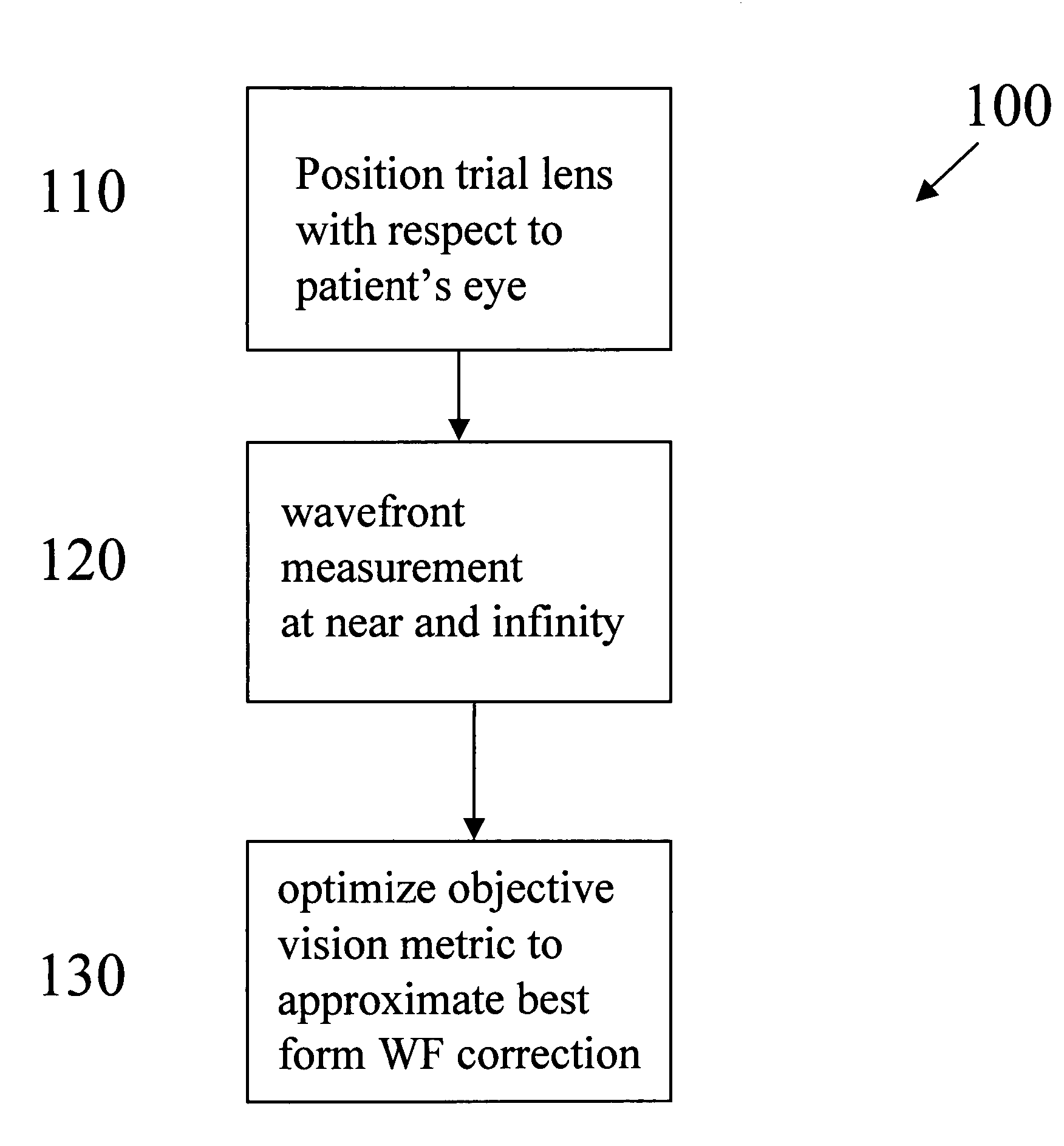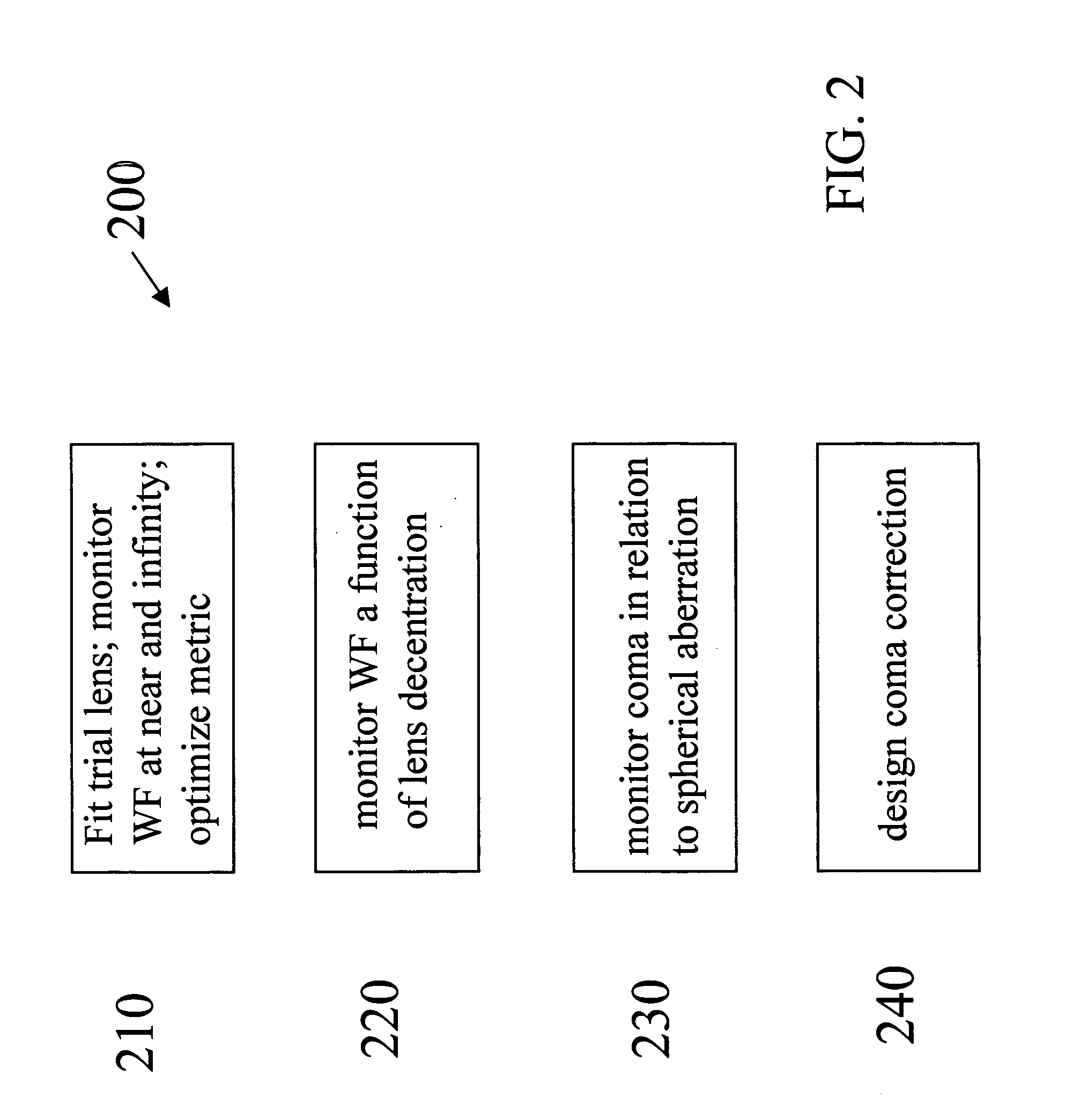Presbyopic vision improvement
a technology of presbyopia and correction, applied in the field of presbyopia, can solve the problems of not fully eliminating residual spherical aberration, and achieve the effects of optimizing the retinal image metric, facilitating the optimal lateral, vertical and rotational placement of the lens, and improving presbyopia
- Summary
- Abstract
- Description
- Claims
- Application Information
AI Technical Summary
Benefits of technology
Problems solved by technology
Method used
Image
Examples
example 1
[0023]This example illustrates the concept that under the ability to manipulate the spherical aberration of an ocular correction, due to the ability to only change rotationally symmetric surfaces or parameters such as, e.g., a contact lens, an IOL, or a broad beam laser, it is more beneficial not to correct all of the spherical aberration when there are significant amounts of non-rotationally symmetric aberrations (e.g., coma, trefoil) present. Patient X had refractive surgery. Her measured post-operative Zernike coefficient values measured with a Zywave® (Bausch & Lomb, Rochester, N.Y.) wavefront sensor were:
[0024]
Z7 Coma0.068Z8 Coma−0.540Z9 (Trefoil)0.103Z10 (Spherical)−0.371Z11 (Spherical)−0.782Z12 (Spherical)−0.308Z13 (Spherical)−0.135Z14 (Spherical)−0.007Z15 (Secondary Coma)−0.183Z16 (Secondary Coma)−0.071Z17 (Secondary Coma)0.021Z18 (Secondary Coma)0.018Z19 (Secondary Coma)0.010Z20 (Secondary Coma)−0.026Z21 (Secondary Spherical)0.023
One can see that there is significant coma a...
PUM
 Login to View More
Login to View More Abstract
Description
Claims
Application Information
 Login to View More
Login to View More - R&D
- Intellectual Property
- Life Sciences
- Materials
- Tech Scout
- Unparalleled Data Quality
- Higher Quality Content
- 60% Fewer Hallucinations
Browse by: Latest US Patents, China's latest patents, Technical Efficacy Thesaurus, Application Domain, Technology Topic, Popular Technical Reports.
© 2025 PatSnap. All rights reserved.Legal|Privacy policy|Modern Slavery Act Transparency Statement|Sitemap|About US| Contact US: help@patsnap.com



